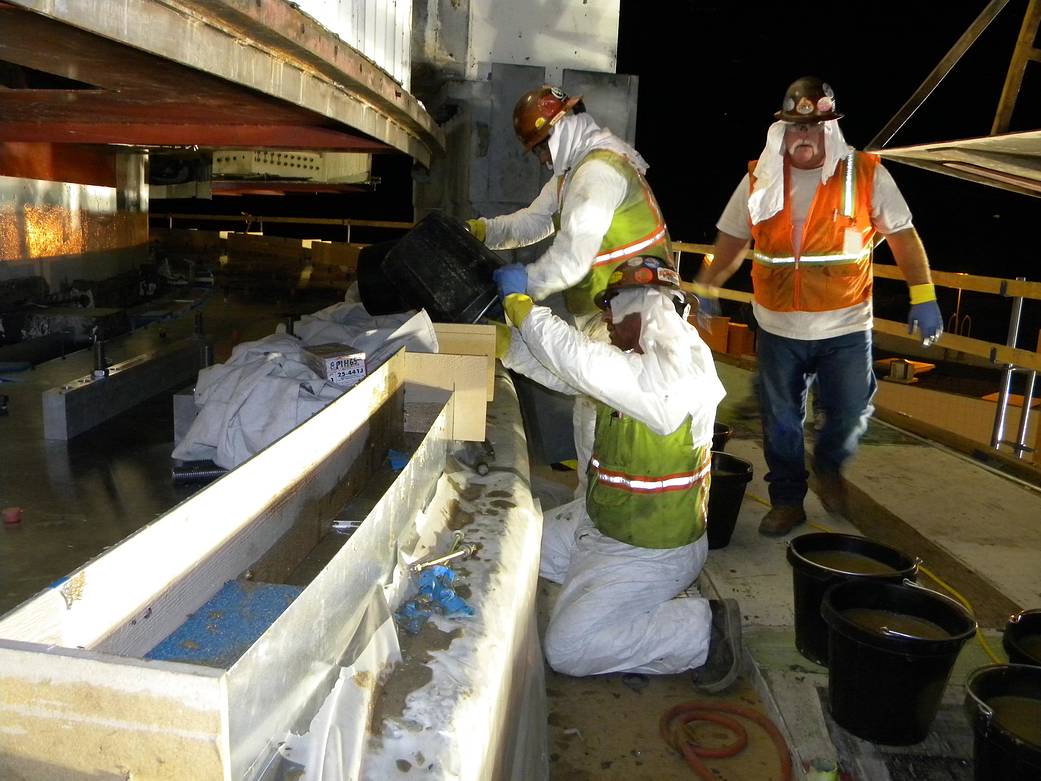
Workers at NASA’s Deep Space Network complex in Goldstone, Calif., pour in a new epoxy grout as the giant “Mars antenna” undergoes major surgery. The grout is part of the hydrostatic bearing assembly, which enables the antenna to rotate horizontally.
The hydrostatic bearing assembly puts the weight of the antenna on three pads that glide around on a film of oil around a large steel ring. The ring is 24 meters (80 feet) in diameter and needs to be flat to work efficiently. After 44 years of near-constant use, the runner surface has become uneven. Engineers and managers at NASA’s Jet Propulsion Laboratory in Pasadena, Calif., which manages the Deep Space Network for NASA, have chosen a new epoxy grout that is much more impervious to oil and thicker runner segments with more tightly fitting joints.
This image was taken on July 9, 2010.
While officially dubbed Deep Space Station 14, the antenna picked up the Mars name from its first task: tracking the Mariner 4 spacecraft, which had been lost by smaller antennas after its historic flyby of Mars.
For more information about the Deep Space Network, visit http://deepspace.jpl.nasa.gov.
Image credit: NASA/JPL-Caltech

























